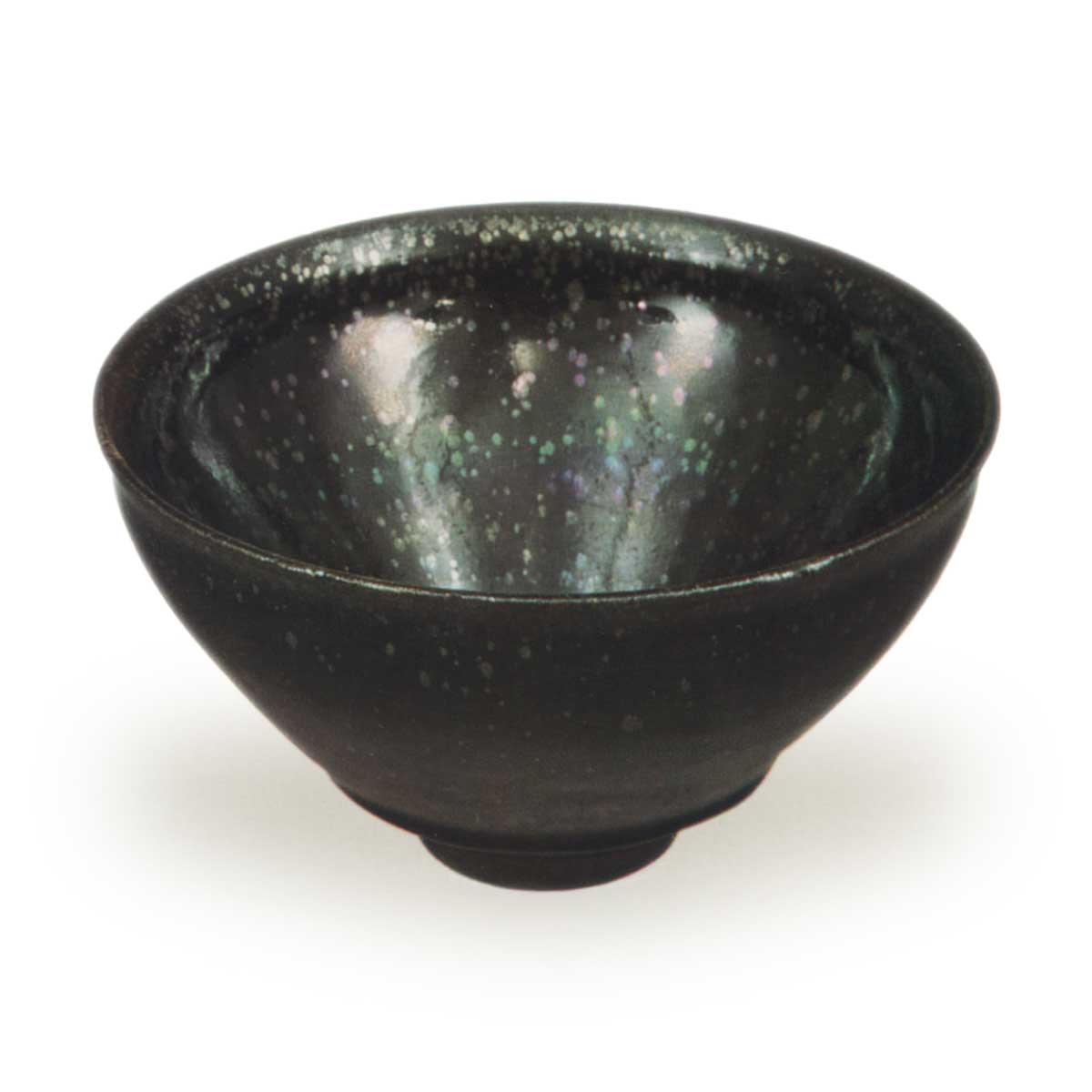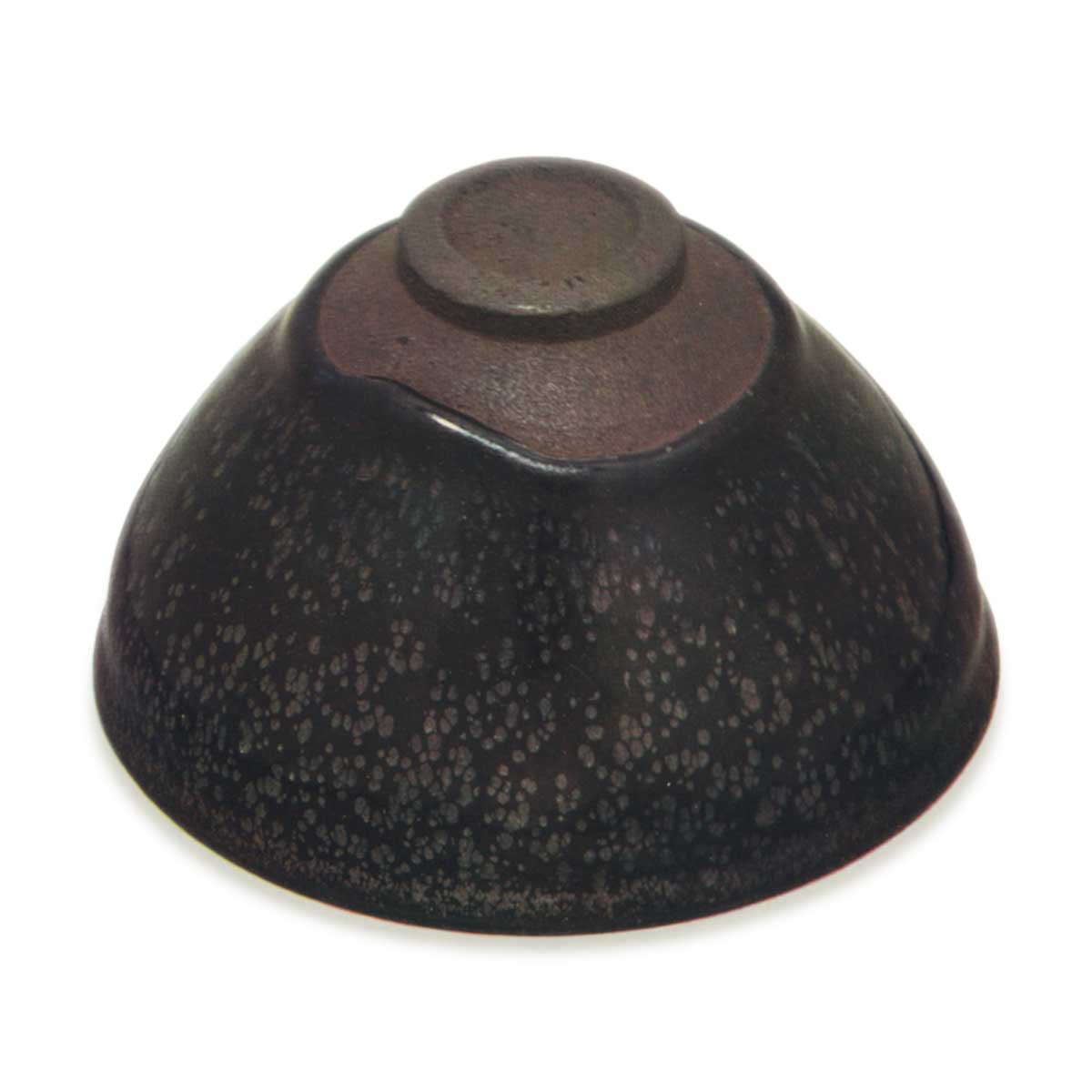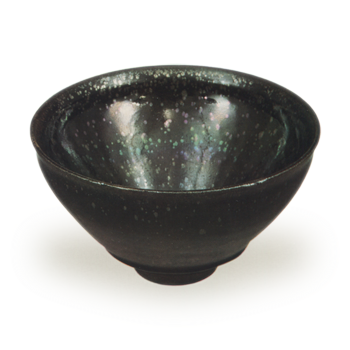

Important Cultural Property
Height: 7.0-7.3cm
Diameter: 12.3cm
Foot diameter: 3.7cm
Height: 0.7cm
This is a Yohen Tenmoku tea bowl that was passed down in the Maeda family of Kaga. It is said that there were only six Yohen tea bowls in existence in ancient times, but today we know of only four: the Inaba Tenmoku tea bowl (National Treasure, Seikado Bunko Art Museum) that was passed down in the Inaba family of Yodo, the Yohen tea bowl (National Treasure, Fujita Art Museum) that was passed down in the Tokugawa family of Mito, and the Yohen tea bowl (National Treasure) that was passed down in Ryukoin Temple in Kyoto. However, they are precious objects that can be found nowhere else in the world except in Japan, and they should be called the treasures of Chinese ceramics.
The mystery of why yohen occurs, unlike yudeki, has not yet been solved. It is clear that they are the result of chance and the control of the fire, but it is not known what conditions the fire must be in to produce them. However, according to the research of Dr. Kazuo Yamazaki, it is known that an extremely thin film, just one-thousandth of a millimeter thick, forms on the glaze surface, and that this thin film breaks up light rays, causing the mysterious iridescence of the seven colors to appear. When a thin film forms on the glaze, it acts like a prism, breaking up the light rays and causing the glaze to emit a rainbow-colored sheen, in the same way as the wings of a jewel beetle, a soap bubble, or oil on water. If the light is strong, the sheen will be bright and clear, but if the light is dull, the yohen will be dull and somber.
The Yohen that has been passed down in the Maeda family is not as brilliant as the Yohen in the Seikado Bunko Art Museum, the Yohen in the Fujita Art Museum, or the Yohen in Ryuko-in, but when light is shone on the inside, the Yohen in blue, green, pink, and purple appear on the glaze surface, as shown in the illustration, and a mysterious brilliance is emitted from the jet-black glaze surface. The grains on the outside are similar to those of mushi-o-dashi, and some of them also give off a mysterious sheen, but it is not as vivid as the sheen on the inside.
If you look closely, you will see that the glaze is slightly indented in the areas where the yohen grains are. This is probably a crystal that formed when the glaze boiled, bubbles formed, and the bubbles evaporated, leaving a hollow where iron rust gathered, and a thin film formed on top, resulting in yohen. The mystery of yohen is what this film is and what caused it to form.
This Yohen Tenmoku tea bowl, which has been passed down in the Maeda family, has a slightly iron-rich, rough clay body that, depending on the kiln conditions, turns a blackish-purple, iron-like color. However, the clay body has been carbonized and soiled and turned black, so the amount of iron contained in the clay itself is not as great as it appears.
The bowl is thickly made, but the twisted rim is relatively thin, giving the bowl a sharp, tight appearance. It has a low, small foot ring, and there is a shallow cut-out inside the foot ring. The jet-black glaze is thick and runs down the sides, and the glaze is particularly thick where it has run down.
There is a pinhole in the center of the interior, and there are two loose areas on the rim, which have been repaired with lacquer, but there is no overglaze rim.
Inner box: gold powder Nashiji, silver powder character “Yohen” by Kobori Enshu
Outer box: paulownia wood, “Yohen” written on the lid
According to the “Ganka Meibutsu Ki” and “Kokin Meibutsu Ruiju”, it was owned by Matsudaira Hizen no Kami, and later passed down to the Maeda family.



